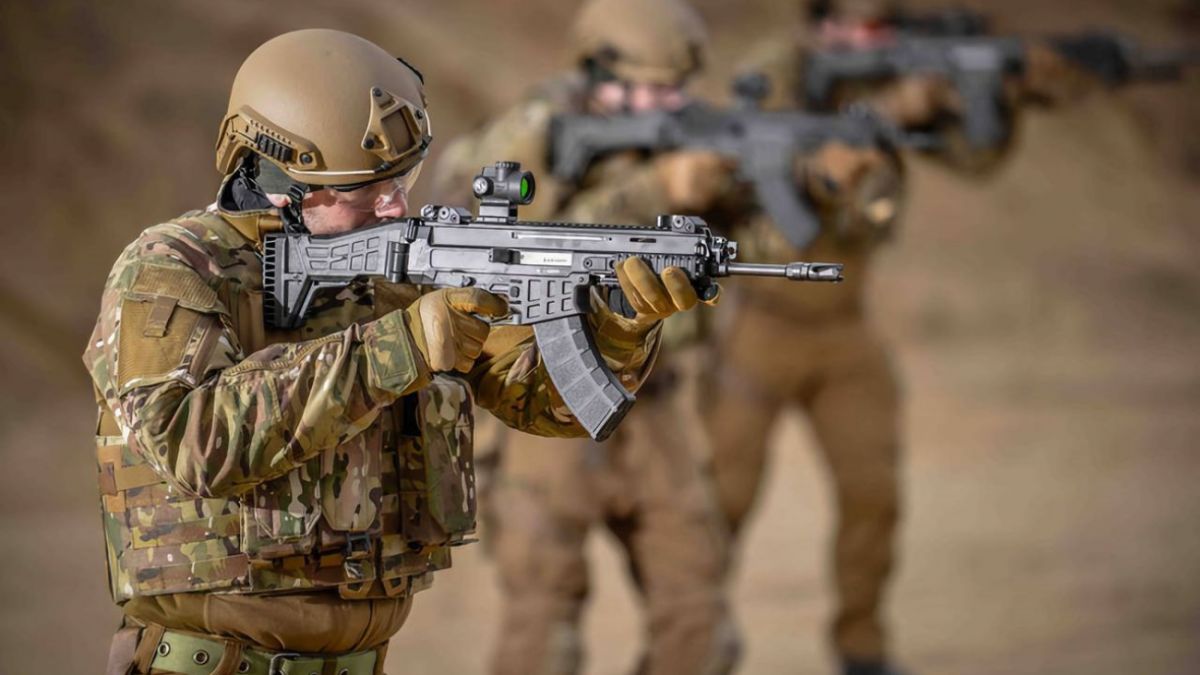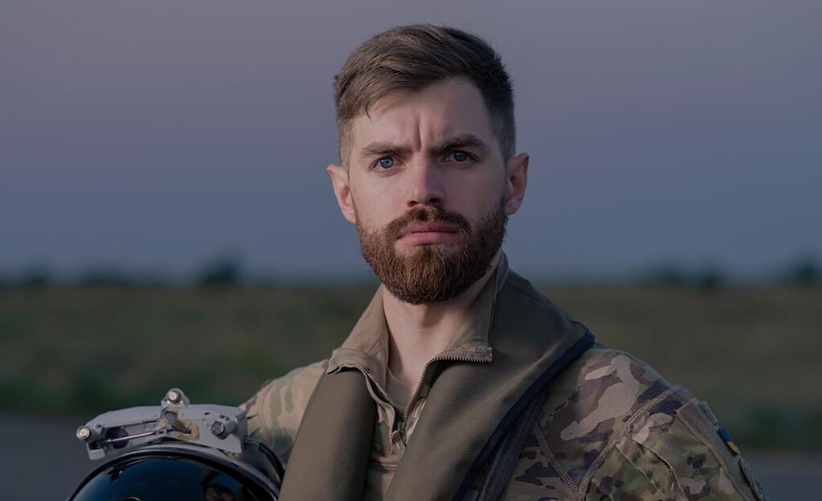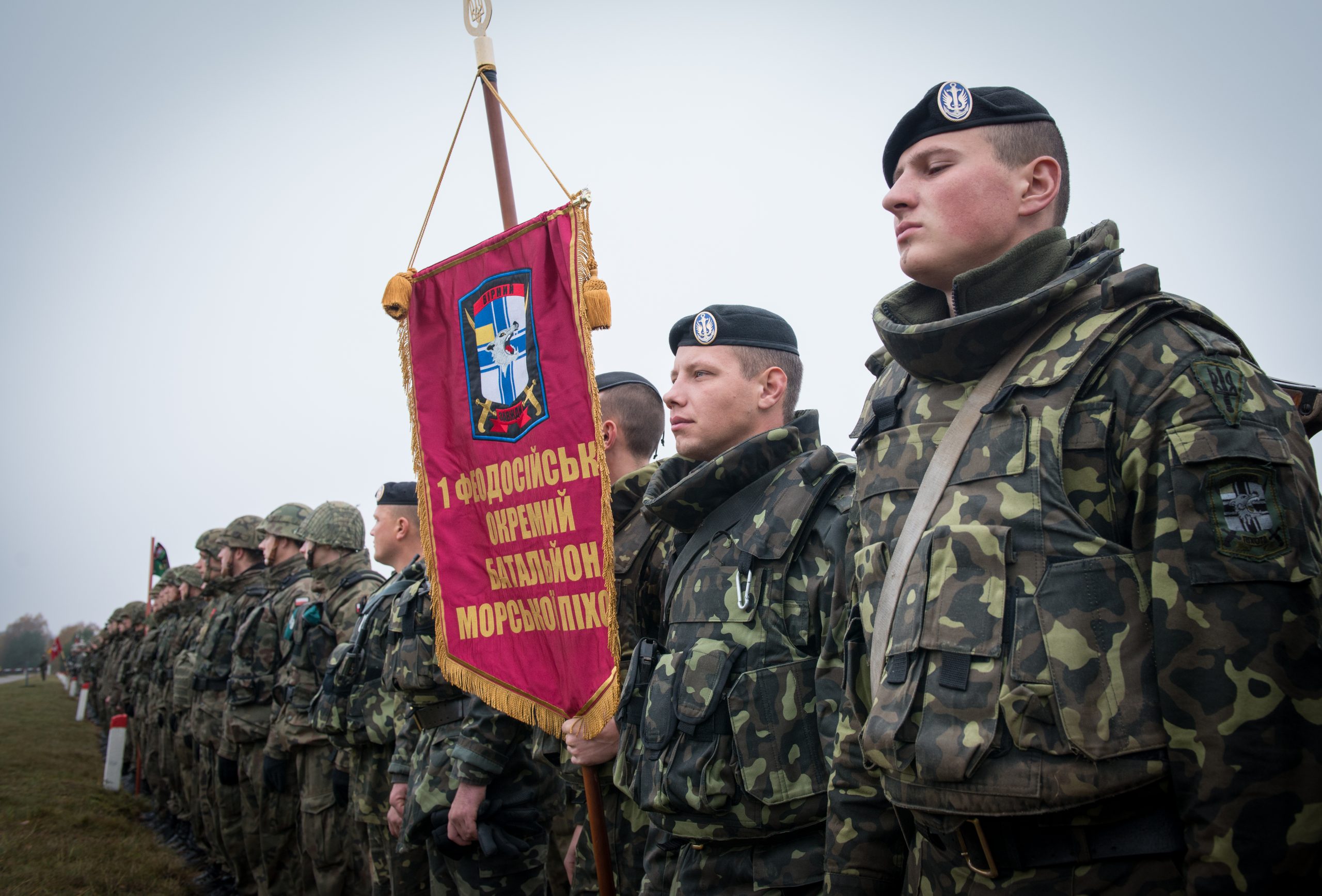Defence Intelligence of the Ministry of Defence of Ukraine
A text version of the First Division’s video exclusively for Militarnyi.
Before reading, please subscribe to YouTube and Telegram channels.
The Defence Intelligence is the intelligence agency of the Ministry of Defense of Ukraine, which must perform the following tasks:
- collecting and analytical processing of the intelligence information, and providing it to the Ministry of Defense;
- conducting measures to promote the realization of the national interests of Ukraine, ensure security, and participate in the development and implementation of state policy in the areas defined by law, strengthening the defense capability of the state, economic, and scientific and technical development;
- identifying and determining the degree of external threats to Ukraine’s national security, including in cyberspace, to the life and health of its citizens and government property outside Ukraine, organizing and conducting special (active) measures against such threats, and countering other activities that pose an external threat for the national security of Ukraine;
- participating in combating terrorism, counteracting intelligence and subversive activities against Ukraine, transnational organized crime, and other criminal activity that pose an external threat to the national security of Ukraine;
- achieving cooperation with the competent bodies of foreign states and international organizations;
- exercising other functions determined by the law to ensure the national security of Ukraine.
History of the DIU
The history of the Defence Intelligence of Ukraine started in February 1992. After the All-Ukrainian Session on Military Construction, the formation of the Defence Intelligence of the Main Staff of the Armed Forces of Ukraine was launched. In the first half of the 1990s, the General Staff was called the Main One. At the same time, our neighbors also formed similar structures within their defense departments. For example, Poland launched the Military Information Services (Wojskowe Slużby Informacyjne – WSI) on September 30, 1991. Romania formed its General Directorate for Defense Intelligence (Direccia Generală de Informații a Apărării, DGIA) on July 1, 1999. The Russians also have similar agencies, for example, on May 7, 1992, the Main Directorate of the General Staff of the Armed Forces of the Russian Federation was formed, and in the same year, the GRU of the General Staff of the Armed Forces of the Republic of Belarus was created.

The core of the newly created intelligence agency included the intelligence department officers of the Kyiv Military District headquarters, intelligence specialists from other Military Districts and the Black Sea Fleet, and personnel who returned to Ukraine after the collapse of the USSR. The beginning of the administration’s development took place under the leadership of Colonel Mykola Kuzmin. Colonel Anatoly Vidanov was appointed the first Head of the Defence Intelligence of Ukraine, who, during the USSR, headed the intelligence of the Siberian Military District. Since July 1992, Major General Vladymyr Legominov has headed the agency, who had previously oversaw the intelligence of the Baltic Military District.
At the same time, an organizational core was formed to create a strategic component of military intelligence, which took place under the leadership of Lieutenant General Oleksandr Skipalskyi, who later served in the SSU and, from 2006 to 2007, headed the regional department of the SSU in the Donetsk region. Despite the lack of the necessary intelligence infrastructure at the initial stage of the development of the Armed Forces of Ukraine, the new intelligence agency became a prototype of the military intelligence system, but could not fully and effectively perform its tasks.
- Mykola Kuzmin
- Vitaliy Vidanov
- Volodymyr Legimonov
- Oleksandr Slipiskiy
The lack of a unified intelligence system made it impossible to collect, process, and transfer intelligence information to its main consumer, the Ministry of Defense. In addition, there was no unified system of operational and combat training, recruitment and placement of personnel, logistics, and the work of educational and research institutions was unorganized. Based on the problems that impeded the formation of an effective intelligence body, representatives of both departments prepared substantiated proposals on the need to create a single central authority for the military intelligence system of Ukraine.
Similar structural changes speaking to the unification of the two agencies into one were happening in other countries. Slovakia merged military and defense intelligence into one agency only on January 1, 2013. Reverse processes were also observed: on September 30, 2006, Poland divided its Military Information Service into the Military Intelligence Service (Służba Wywiadu Wojskowego, SWW) and the Military Counterintelligence Service (Służba Kontrwywiadu Wojskowego, SKW).


After the completion of the unification process, the issue of creating special forces units came forward. This process was entrusted to Yaroslav Horshko, a veteran of Soviet–Afghan War and the professional, who, after the collapse of the USSR, returned to Ukraine.

On April 14, 1994, the Decree of the President of Ukraine renamed the Main Directorate of Military Intelligence of the Ministry of Defense of Ukraine to the Defence Intelligence of the Ministry of Defence of Ukraine (Defence Intelligence of Ukraine).
In 1995, the DIU participated in countering an attempt of the Russian Federation to annex Crimea with the help of the then so-called “President of Crimea” Meshkov. In the same year, Mykola Verkhohliad, one of the intelligence officers of the DIU, who then commanded the Ukrainian peacekeeping contingent in Bosnia and served as a Deputy Commander of the UN forces in the Sarajevo sector, commanded the defense of the Žepa enclave. At that time, the forces of the VRS Drina Corps attacked 79 Ukrainian peacekeepers. However, Ukrainian peacekeepers did not allow massacres of more than 9 thousand inhabitants of the enclave and refugees who were in it.
On March 22, 2001, the Verkhovna Rada of Ukraine adopted the law “On intelligence agencies of Ukraine”, and the Defence Intelligence of the Ministry of Defence of Ukraine received the status of a special government agency.
Between 2003 and 2008, DIU operators participated in the Ukrainian peacekeeping operation in Iraq.
In 2003, they were involved in countering another attempt to annex Crimea, when the Russians tried to build an embankment dam to Tuzla Island.
There were no further significant legislative changes or changes in the activities of Defence Intelligence until 2014. We can mention order No. 320 of June 1, 2007, signed by Anatoliy Hrytsenko, then Minister of Defense, determining September 7 as a professional holiday for military intelligence officers. However, this day became an official holiday only in 2022.
List of Chiefs of the Defence Intelligence of Ukraine between 1997 and 2014:
- Colonel General Ihor Smeshko, since June 9, 1997;
- Colonel General Viktor Palii, since September 29, 2000;
- Colonel Oleksandr Halaka, since March 13, 2003;
- Lieutenant General Viktor Hvozd, since January 17, 2008;
- Colonel General Serhii Hmyza, since August 17, 2010;
- Major General Yurii Pavlov, since March 3, 2014;
- Lieutenant General Valerii Kondratiuk, since March 3, 2015;
- Colonel General Vasyl Burba, since October 15, 2016;
- Major General Kyrylo Budanov, since August 5, 2020.
- Igor Smeshko
- Viktor Paliy
- Oleksandr Galaka
- Viktor Gvozd
- Sergiy Gmiza
- Yuriy Pavlov
On March 3, 2014, Major General Yurii Pavlov headed the department but did not stay long in office. Exactly one year later, on March 3, 2015, he was replaced by Lieutenant General Valerii Kondratiuk.
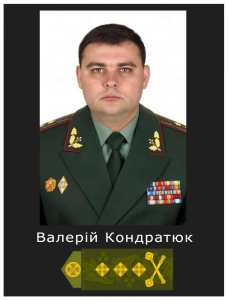
DIU during ATO/JFO Operation
During the ATO, the combat history of the DIU was written by the 10th Separate Special Purpose Unit, 3rd and 8th Special Purpose Regiments, then subordinated to the DIU.
On May 26, 2014, operators of the 10th Separate Special Purpose Unit and the 3rd Special Purpose Regiments took the fight for Donetsk Airport.
On June 17, 2014, a group of the 8th Regiment’s soldiers, led by Senior Lieutenant Yevhen Zelensky, left to liberate the Aidar battalion volunteers from Russian captivity. The soldiers completed their mission but were ambushed. Yevhen personally covered the withdrawal of the hit armored personnel carrier. Later, the participants of that battle recalled that the Commander basically covered them from an enemy explosion. He died a week later from injuries in the Kyiv Military Hospital and was posthumously awarded the title Hero of Ukraine.
On July 28, 2014, the 3rd Special Purpose Regiment conducted the search for downed Su-25 pilots, with the rescue team consisting of two groups of 9 people and one Ural truck driver each. The groups arrived to the outskirts of the village of Latyshevo, and there, due to the betrayal of the local resident, the group’s location was exposed. A powerful militant group was sent to this location. During this battle, 10 soldiers died, another 5 were captured, and only 4 were able to reach friendly forces.
Later, the 3rd Regiment participated in protecting the depots in Bakhmut, the battles for the Donetsk Airport, Savur-Mohyla, and the battles for Debaltseve. The 8th Regiment participated in battles near Metalist, battles for Luhansk Airport, and battles for Bakhmutka. In 2016, the 3rd and 8th Regiments were withdrawn from the DIU subordination and became part of the newly created Special Operations Forces.
Between August 6 and 8, 2016, the DIU carried out a raid operation, which, according to Ukrainian sources, was aimed at delivering weapons, ammunition, and explosives to Crimea. They were intended to sabotage Russian military facilities. Kyrylo Budanov, current Chief of the Defence Intelligence of Ukraine, then in the rank of Major, headed a group of five operators.

The team landed on the shore of Perekop Bay and advanced to the village of Suvorove, where a car with driver Andrii Zakhtei was to wait for them, but due to treason, the operators were ambushed by the FSS special forces detachment Vimpel. Some of the Vimpel fighters were in the car, the rest took up positions nearby. Budanov’s team managed to escape from the encirclement, injure two FSS officers and kill Lieutenant Colonel Roman Kamenev, commander of Vimpel. Shocked by the loss of the commander, the Vimpel fighters did not follow the group.

After this incident, an operation to block the entire area of Armyansk and departures from the Autonomous Republic of Crimea was immediately launched, involving the forces of the MoD, Rosgvardiya, the FSS, and the police. During this operation, a combat helicopter fired at a civilian vehicle. However, a group of DIU operators was able to reach the north of Crimea, the dams through Sivash Bay. And from August 7 to 8, the group decided to break through to the mainland of Ukraine.
A unit of the 247th Guards Air Assault Regiment of the Russian Federation guarded the dam with armored vehicles. They were waiting for DIU operators but did not think that they would attempt a breakthrough. Ukrainian commandos were able to pass the Russians unnoticed, but at the final stage, they were spotted by Corporal Semyon Sychev, and the battle began. As a result of the battle, Sychev was killed, and several more paratroopers were injured.

A mine was installed to prevent the pursuit of vehicles on the dam, after which, the operators moved to the territory controlled by Ukraine.
On October 15, 2016, Vasyl Burba, then in the rank of Major General, headed the DIU.
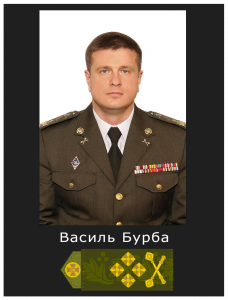
On October 24 of the same year, the DI presented a new emblem and slogan of the Defence Intelligence of the Ministry of Defence of Ukraine. The agency’s new symbol was an owl holding a sword in its paws over the territory of Russia, and the slogan was the Latin phrase “Apiens dominabitur astri,” meaning “The Wise will rule the Stars.” All this can be considered a kind of mocking of the Russian GRU, the symbol of which is a bat, that is, a typical prey of an owl, and the slogan is the phrase “Only stars above us.”

After the failure of Operation Avenue and the resonance of Wagnergate in August 2020, Burba was dismissed with the rank of Colonel General. He was replaced by Kyrylo Budanov, current Chief of the Defence Intelligence of Ukraine, then in the rank of Brigadier General, and currently in the rank of Major General.

One of the most famous DIU operations in Ukraine and even around the globe was the evacuation of Ukrainians and citizens of other countries from the Afghan capital. Then, on August 18, 2021, the operators of the DIU’s 10th Separate Special Purpose Unit were brought to Kabul by Il-76MD of the 25th Transport Aviation Brigade and immediately undertook the evacuation.
In total, during the operation, Ukraine evacuated approximately 700 people, including pro-Western journalists, human rights activists, UN representatives, and people who worked with ISAF countries’ military missions. The DIU operators left 3-4 times a day outside the airport to the Taliban-controlled territory of the city to search for and evacuate people identified by the Ministry of Foreign Affairs of Ukraine.
Special publicity was caused by the events of August 27, when DIU operators, at a time of the critical level of terrorist threats and constant suicide bombing of ISIS terrorists, which caused mass casualties, agreed to evacuate Afghan translators and their families who collaborated with the Canadian military. The operators went outside the airport to the local market, located 600 meters away, where they found cars with 19 people and led them through the encirclement to the airport, after which people were evacuated.
It is worth mentioning that the last aircraft that evacuated the civilians was the Ukrainian Il-76, with the search and evacuation of people continuing until the final closure of the entrance to the airport. The DIU assisted in the evacuation, and after the final withdrawal of international forces from Kabul, another 97 people were evacuated from Kabul on September 23.

At the beginning of the full-scale war, the DIU’s 10th Separate Special Purpose Unit met the enemy in Hostomel, where it did not allow it to create a bridgehead to capture Kyiv. Later, DIU units participated in the assault and “clean up” of the city and generally fought for the Kyiv region, where they carried out sabotage, reconnaissance, and adjustment operations.
In March 2022, the Defence Intelligence of Ukraine helped organize helicopter raids on Azovstal. In total, 7 flights, which involved about 16 army aviation Mi-8 helicopters, were conducted. It allowed the evacuation of 64 wounded, landing 72 volunteers to reinforce the defenders of Mariupol, and deliver 30 tons of cargo. During the operation, three helicopters were lost.
During the battles for the Kharkiv region and in the Kharkiv counter-offensive, the DIU’s Kraken Regiment played a large role. With its participation, from March to the end of September 2022, the Defense Forces liberated about 25 settlements in the Kharkiv region, and one in the Luhansk region. As of January of this year, the Regiment participated in the battles for Soledar, and in March, for Bakhmut.
DIU special forces participated in the battles for the Zmiyinyi Island, namely in a joint landing operation with the SSU Special Group “Alpha” on May 8, finally reclaiming control over the island on July 7.
On May 8, 2022, a landing operation started on Zmiyinyi Island. At that time, a group of several helicopters landed the troops of the DIU and the Special Group “Alpha” on the island, where a battle with the enemy ensued. During the battle, the decision was made to retreat from the island, and all eight helicopters returned to their home sites without damage. One naval aviation Mi-14 helicopter that participated in the operation was shot down near the shore of the Odesa region, killing Colonel Ihor Bedzai and Captain Serhii Mushchitsky. The day before, on May 7, the missile hit the striking boat Stanislav.
On July 7, the soldiers of the Defence Intelligence, along with 74 ICSOs, 801 OPPPs, and engineers of the 59th Brigade, landed on the Zmiyinyi Island using boats and installed the national flag on it. In July, an operation to free five hostages in the Kherson region was carried out with DI fighters penetrating the rear of the enemy, freeing the hostages, and returning back.
On the night of January 23-24, 2023, the Defence Intelligence soldiers conducted a reconnaissance raid on the Nova Kakhovka area, crossing Dnipro using motor boats. With the help of local supporters and technical means, the soldiers discovered an advanced command post. Having engaged the enemy, commandos with grenade launchers destroyed the house, hosting an enemy command post. Perceiving the landing as an attempt to break through the defensive line, the invaders immediately engaged combat reserves: a unit of special operations forces, aviation, and armored vehicles. During the battle, 12 invaders were killed, the BTR-82А destroyed, and a prisoner was captured. After completing the task, the group returned to the right bank of the Dnipro river.
In addition to such high-profile operations, the DIU constantly performs smaller, but no less important reconnaissance, sabotage, and other combat missions, that are not reported to the media. Additionally, even during the war, the DIU continues helping citizens of Ukraine abroad. On March 17, 2023, the intelligence department announced the release of eight Ukrainian citizens from Syrian captivity, six of whom are children. On April 26, it reported the evacuation of 138 people from the capital of Sudan, 87 of whom were Ukrainian citizens. The DIU is also actively involved in negotiation processes to exchange prisoners of war.
The modern organizational structure of the DIU consists of Strategic Intelligence Directorate, Armed Forces General Staff Intelligence Support Directorate, Information Support Directorate, Personnel Policy Directorate, Logistic Directorate, Internal Security Department, Planning Department, Automation and Communication Department, Economic and Finance Department, Information and State Secret Protection Department.
The following information on the DIU’s organizational and staff structure will only contain the information that appears in official messages, and information from open sources. These include the following establishments:
49 Intelligence Training Center

10th Separate Special Purpose Unit named after Major General Maksim Shapovalov

Special Forces Battalion “Shaman”

Kraken Regiment

“Kryla” Special Purpose Unit
Aviation Detachment

The 54th, 72nd, 120th, 129th, 130rd, 131st, 132nd, 140th, and 143rd Reconnaissance Battalions are also worth mentioning. They have also become an important reconnaissance component, although they do not directly subordinate to the DIU.
In addition, the following signal intelligence centers are subordinate to the DIU: West, North, and South. The subordination of the DIU includes signal intelligence of the Air Force and the Navy.

Separately, it is necessary to highlight an international legion at the DIU, which includes a large number of different national formations, refineries, the Georgian National Legion, the Kalinovsky Regiment, and the Russian Volunteer Corps.

It is impossible to name all the DUI’s weapons and equipment. Therefore, we only list what appeared in the photo or video materials in the DI’s official sources, so the list is likely to be incomplete.
In service with the DIU are:
– B&T APC45 submachine gun;
– RGP-40 and MLG Multiple-shot Grenade Launcher;
– M320 grenade launcher;
– 5.45mm and 7.62mm Kalashnikov, Vulcan (Malyuk), FN SCAR L and H, CZ Bren 2, М16, M4 assault rifles;
– DT SRS, Barrett M82, Arctic Warfare, UAR-10 sniper rifles;
– PKM, М240, М249 machine guns;
– Glock-17 gun (perhaps others are used, but other weapons could not be identified from the DIU’s official information).
AMVs: BATT UMG, Roshel Senator, Alvis 4, HMMWV, Oncilla, Kozak-5. In 2016, there were also reports about the purchase of the Pegas-2 buggy.
The Defence Intelligence has its own aviation. Judging by official reports, it includes Mi-24 and S-70A helicopters. In addition, there was information on the transfer of two Bayraktar TB2 UAVs.
We can confidently claim that today, the Defence Intelligence of the Ministry of Defence of Ukraine is one of the most effective and capable institutions among similar ones in the world. In addition to the exclusive intelligence and sabotage orientation of other similar intelligence agencies, the DIU develops and conducts assault and evacuation operations. There are either very rare or non-existent across the world.
SUPPORT MILITARNYI
Even a single donation or a $1 subscription will help us contnue working and developing. Fund independent military media and have access to credible information.

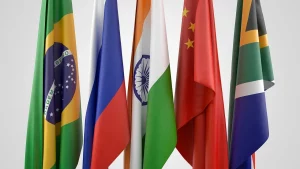
 Центр ініціатив ПЖ
Центр ініціатив ПЖ 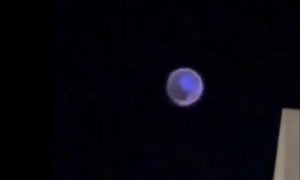
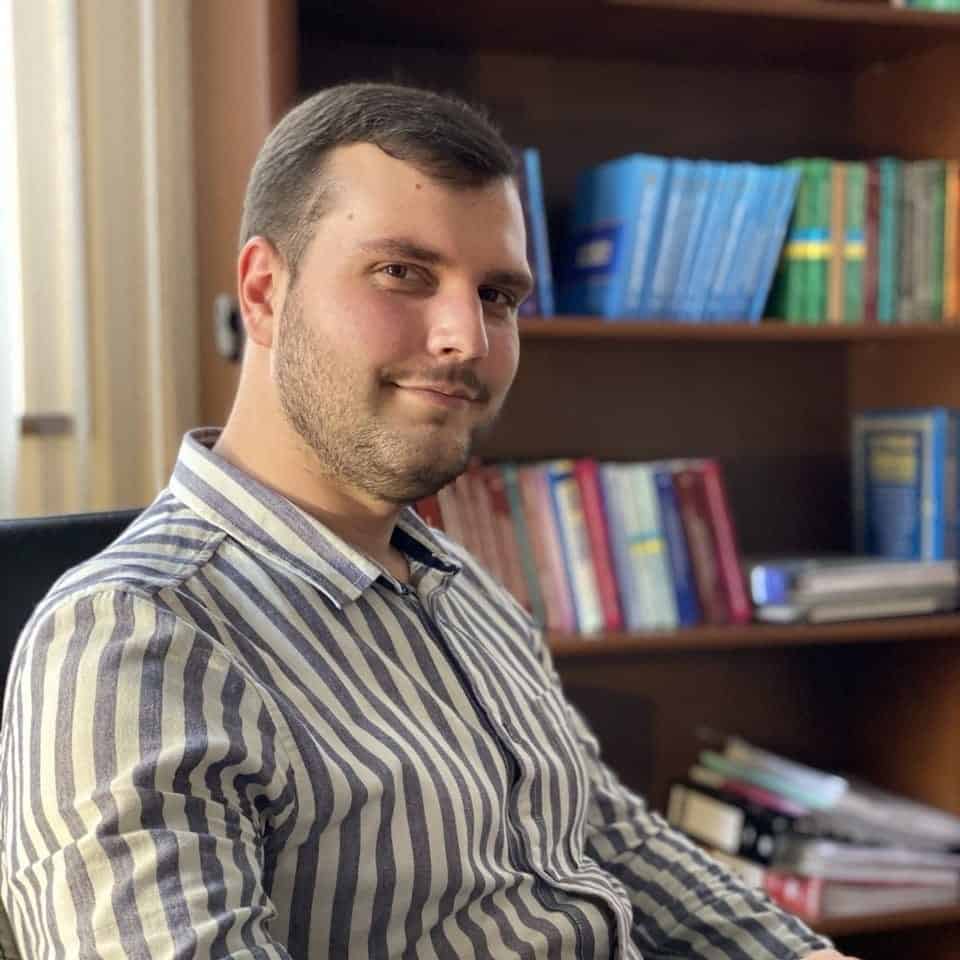 Vadim Kushnikov
Vadim Kushnikov 
 Андрій Тарасенко
Андрій Тарасенко 
 Юрій Юзич
Юрій Юзич 
 Віктор Шолудько
Віктор Шолудько 
 Роман Приходько
Роман Приходько 

 Андрій Харук
Андрій Харук 


 Yann
Yann 
 СПЖ "Водограй"
СПЖ "Водограй" 











